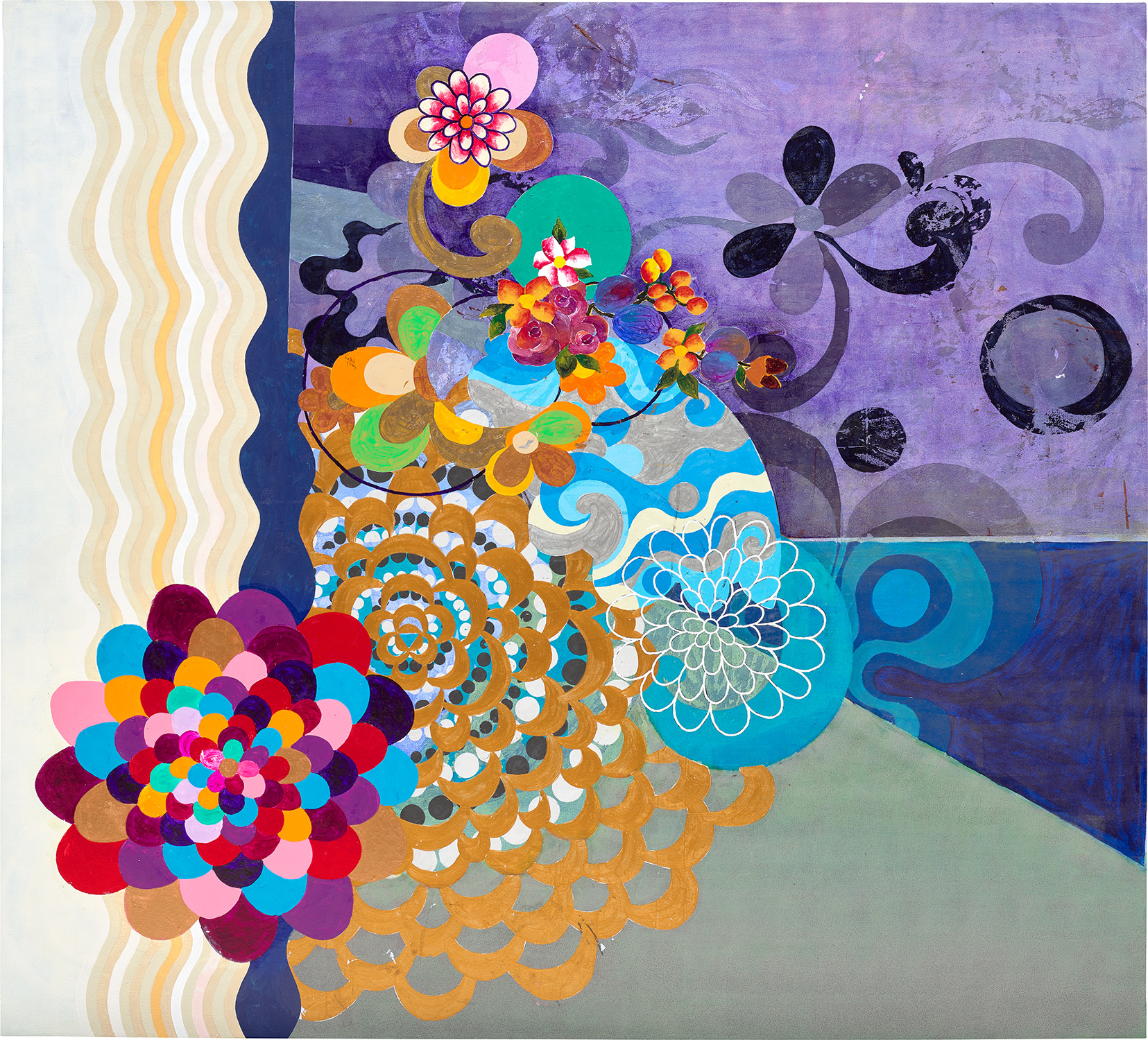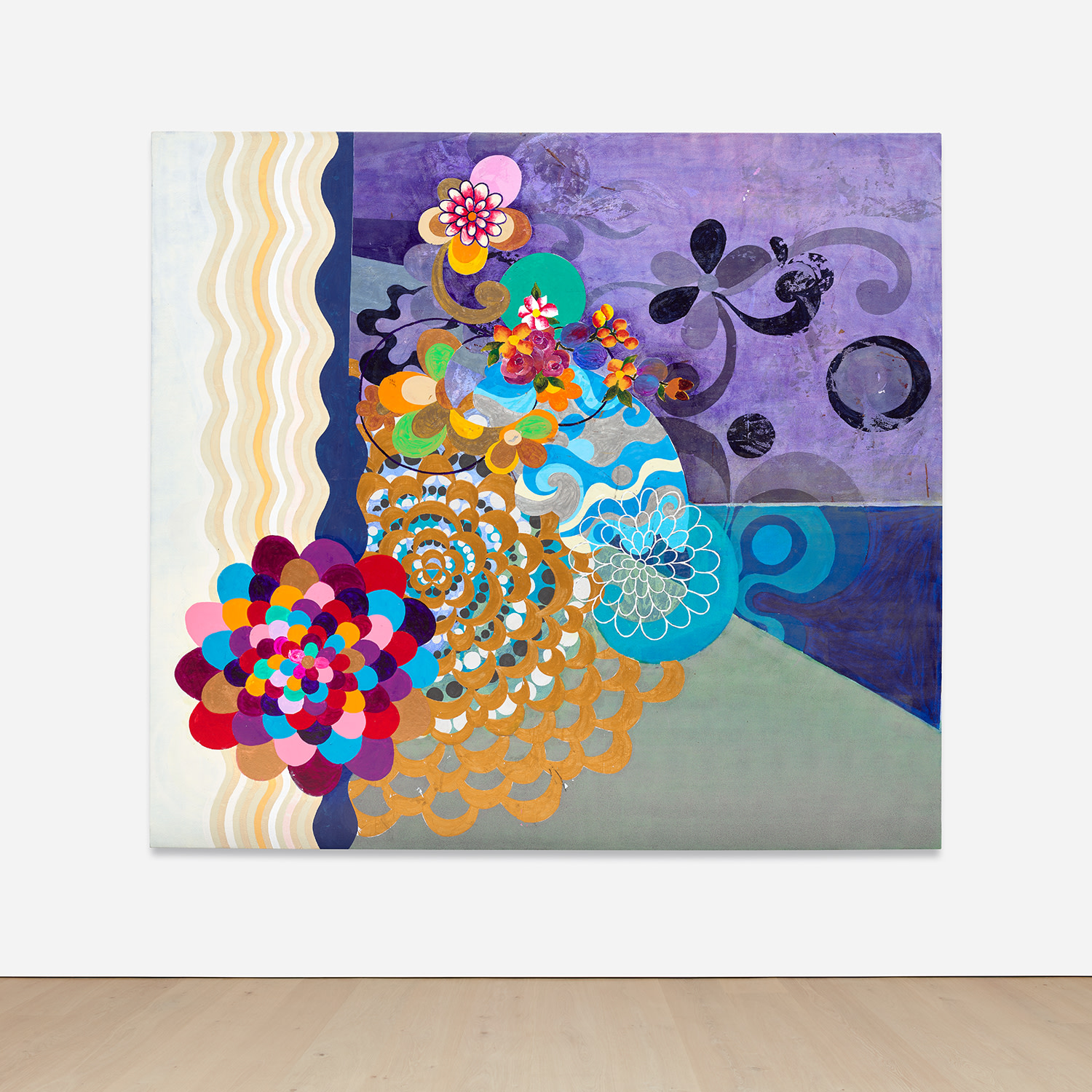



Property from a Distinguished European Collector
13
Beatriz Milhazes
Mares do Sul
signed, titled and dated ‘B. Milhazes “Mares do Sul” 2001’ on the reverse
acrylic on canvas
178.5 x 197.3 cm (70 1/4 x 77 5/8 in.)
Painted in 2001.
Further Details
Full-Cataloguing
Beatriz Milhazes
Brazilian | 1960Beatriz Milhazes is best known for her vibrantly colored yet calculated compositions. The artist has cited Baroque architecture, lace work, Carnival decoration and the flora of the Jardim Botanico in Rio de Janiero chief among her inspirations. Milhazes' artistic practice is akin to monotype or collage in that the artist first paints motifs directly onto transparent plastic sheets and later applies them to the canvas, leaving the plastic to dry. The superimposed image allows for overlapping and layering, resulting in a textured canvas and a distorted central focal point. While seemingly chaotic, Milhazes' compositions are perfectly balanced due to the artist's technically sophisticated use of geometric forms and chromatic color palate.